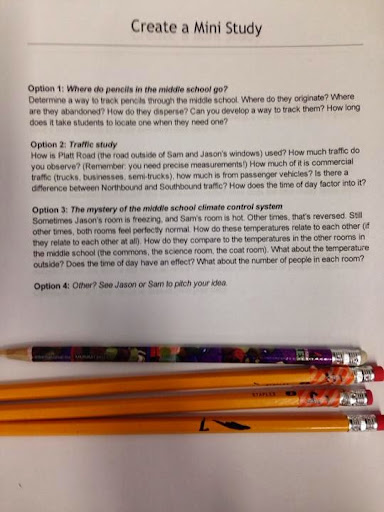We're back to a project involving observational science this week, as students are tasked with creating individual studies to document the fluctuations of temperature in the middle school, the flow of traffic on Platt Road, or the mysterious travels taken by pencils in the S-K middle school.
 |
| Pencils with odd markings are showing up all over the middle school. Each one is from the study of a different student, attempting to track its movements through Summers-Knoll. |
 |
| The inspiration for the pencil banding. |
Each student is designing their own study, developing a data collection instrument, and attempting to gather data in a useful, meaningful way. By the end of the week, we should be able to draw some conclusions based on the information that we've collected.



